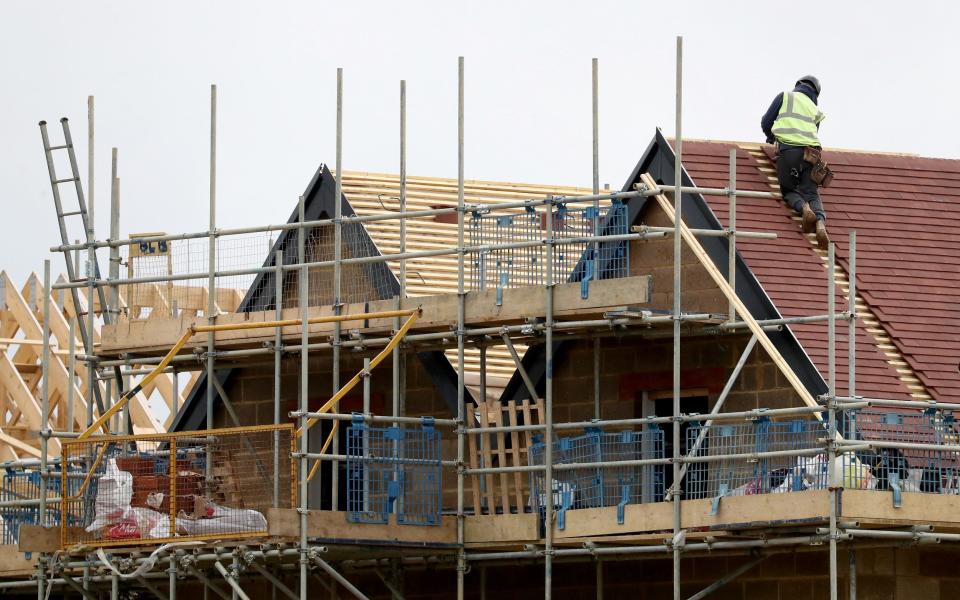Questor: This infrastructure fund is building itself back up

The decision of central banks in Canada and Europe to cut interest rates this month means it is probably only a matter of time before the Bank of England follows suit and lowers the Bank Rate from 5.25pc.
That will be a huge relief to investors in infrastructure funds and real estate investment trusts which have struggled as rates were aggressively raised from near-zero in December 2021 to their current level last August.
Funds like HICL Infrastructure, a £3.2bn investment trust first tipped by this column in 2014, are sensitive to rises in the yields on government bonds which increase when interest rates go up.
With 58pc of its portfolio invested in public-private partnerships (PPP) managing the fabric of schools, hospitals, police stations and barracks, social infrastructure funds like HICL have long been viewed as “bond proxies”.
The government-backed revenues they receive from long-term contracts averaging 14 years does make them comparable to a bond paying regular, fixed levels of income.
And with 64pc of assets in the UK, movements in gilts, or UK government bonds, are highly influential on HICL.
It is no coincidence that the period from August to October 2022 – when 15-year gilt yields doubled to 4.8pc largely in response to the uncosted “mini-Budget” of Lizz Truss – marked a high point in the share price.
From 176p in early September 2022, when the shares stood on a premium of 8pc above the value of the trust’s assets, HICL has tumbled by a third to 121.8p, where it languishes 22pc below analysts’ latest estimate for net asset value (NAV) of 156.8p per share.
Fortunately, annual results published last month had encouraging news.
While the NAV fell 4.1pc in the 12 months to March 31, as high interest rates knocked its income-producing assets, the rate of decline slowed to 0.75pc in the final three months of the financial year.
More positively, the company announced it would increase its quarterly dividends to a total of 8.35p per share next year, putting it on a forecast, covered yield of nearly 7pc and ending what will be five years with the payout stuck at 8.25p.
HICL also reminded shareholders it had sold nine infrastructure projects for £500m, either at or above their previous valuation.
That quashed fears the depressed share price indicated the NAV was overstated.
In addition, the completion of two disposals of stakes in the Northwest Parkway toll road near Denver, Colorado, and the transmission link to Hornsea II in the North Sea, the world’s largest offshore wind farm, meant its expensive overdraft, or credit facility, could be repaid.
Savings, an increase in the inflation-linked revenues from HICL’s contracts and the Channel Tunnel HS1 rail link resuming distributions to its shareholders – including HICL – were factors in the decision to lift next year’s dividend.
With cash continuing to flow, HICL was able to launch a £50m share buyback designed to narrow the wide share price discount.
It was also a recognition by the company that purchasing its cheap stock is currently the best investment it can make.

Fund manager Edward Hunt said three new investments had improved HICL’s ability to deliver income and capital growth.
He said the portfolio was split between high-yielding, mature PPP investments and younger projects of up to 48 years that could generate 7pc annual growth.
All this pleased Capital Gearing Trust, a defensive £1bn global portfolio also tipped by Questor, which lifted its small stake in HICL from £4.4m to £7.7m last year.
Co-manager Chris Clothier said Capital Gearing was positive on the sector and increased its holdings in infrastructure funds to 8pc from 6pc.
Mr Clothier said HICL could generate a return of 9pc a year even if the discount didn’t disappear, though he hoped the company would step up buybacks if it sold further assets.
“We think the board is increasingly focused on capital discipline which, one way or another, will be positive for shareholders,” he said.
Iain Scouller, an analyst at broker Stifel, agreed.
Despite inflation nearing the Bank’s 2pc target, having fallen from an 11pc peak 20 months ago, he believed gilt yields could stay above 4pc due to high government borrowing, forecast by the Office for Budget Responsibility to hit nearly 99pc of GDP next year.
Nevertheless, he rated HICL and other infrastructure funds a “buy”, including BBGI which we backed in April, saying their dividend yields offered an attractive margin over gilts, especially with their shares on wide discounts.
That’s a view we share.
Questor says: buy
Ticker: HICL.L
Share price: 121.80p
Gavin Lumsden is editor of Citywire’s Investment Trust Insider website
Read the latest Questor column on telegraph.co.uk every Sunday, Monday, Tuesday, Wednesday and Thursday from 8pm.
Read Questor’s rules of investment before you follow our tips


 Yahoo Finance
Yahoo Finance 